
views
Latch Installation
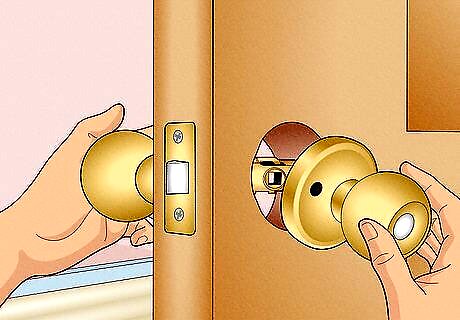
Remove the old door knob, latch, and strike plate. If you have not already removed the old door knob and latch, take it out before you begin installing the new one. Depending on the door, you may also need to remove the strike plate—to take it out, remove the top and bottom screws with a screwdriver and lift it carefully out of the door. The strike plate is a rectangular metal piece that attaches to the door side, with a round or rectangular hole in the middle for the latch to slide through. If you are installing a new latch, you will likely need to remove the old strike plate. Most latches come with their own strike plates.
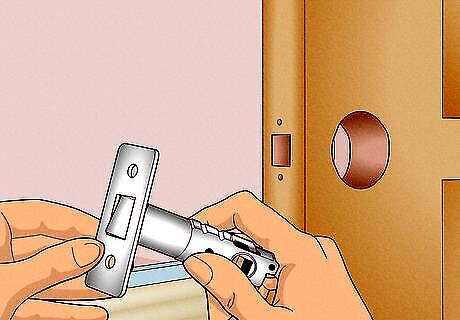
Install a latch plate on top of the latch. Depending on the door mortise (the hole that the latch sits in), the latch plate may be round or rectangular. If your latch came with a rectangular plate and you need a round one (or vice versa), take measurements of your latch plate. Purchase a latch plate that fits your door mortise and, after prying off the old plate, place the new latch plate on top of the latch. The latch plate sits on top of the latch and allows it to rest on the inside of your door without scratching it. Rectangular is standard for most door latches.
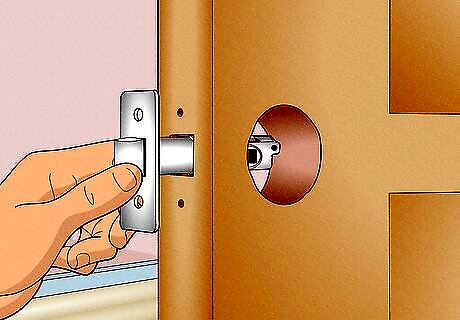
Slide the latch inside the edge of the door. Insert the latch through the door hole so the flat (beveled) side of the latch is facing the door jamb. If the beveled side does not face the jamb, you may have difficulty closing the door.
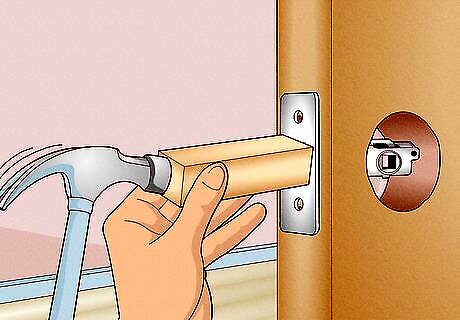
Use a wooden block and a hammer to tap the latch into place. If you cannot fully slide the latch in, place a thick, rectangular block of wood over the end of the latch. Tap the latch into the hole with a hammer until the latch's back reaches the end of the hole.
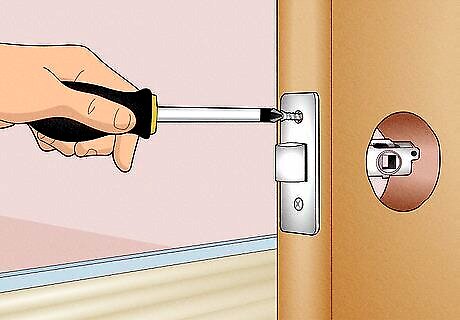
Secure the latch into the door with 2 screws. Most latches are secured to the door with a screw on the top and bottom. Adhere the latch to the door with as many screws as required by its design. Do not buy any additional screws. If your latch needs screws, they will likely come as a set.
Door Knob Attachment
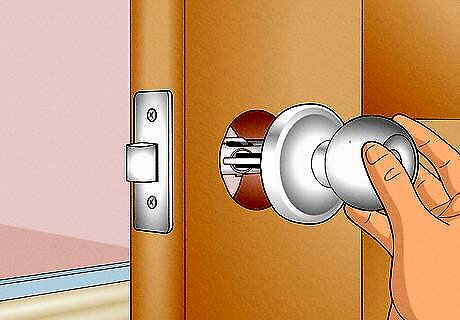
Secure the first half of the doorknob in through the latch. One half of the door knob should have a square steel peg sticking out of its side. Insert this half of the door knob in first, placing the peg through the latch mechanism.
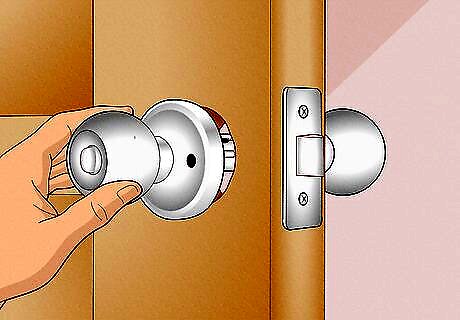
Align the other half of the door knob with the first one. Lift the other half of the door knob up and place it on the other side of the hole. Align both sides with their screw holes, turning the sides around as needed.
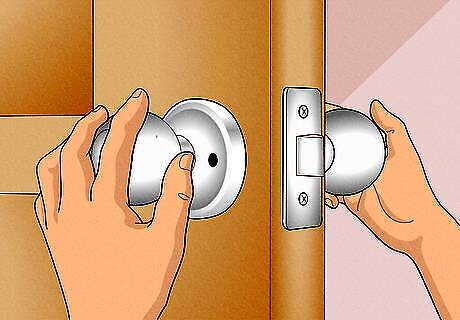
Push the two sides of the door knob together. If the 2 door knob sides are not fully aligned, they may feel loose or shaky after installing them. With one hand on each side of the door knob, press both sides of the door knob together through the hole. If a side seems stuck, pull both apart and make sure that the side without the square peg is aligning through the one with the peg.
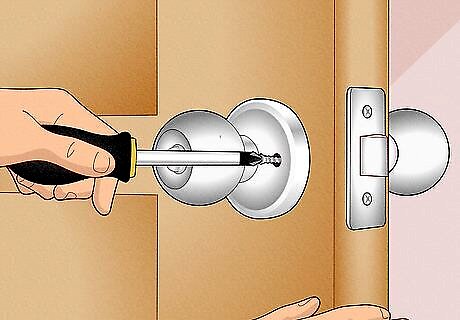
Attach both door ends with screws. Check your door knob for screw holes to determine how many you will need. The number should match the number of screws your doorknob came when. Then, use a screwdriver to secure both knob sides to the door. Most door knobs are affixed to the door with 2 screws on the top and bottom.
Final Touches and Tests
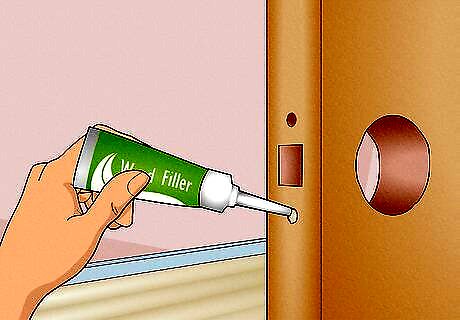
Use wood putty to secure any loose screws. If your new door knob is too small for the screw holes left by the old door knob, purchase a hardening-type wood putty or filler. Fill any screw holes with the wood putty and give it 30 minutes to a few hours to dry, depending on the putty instructions.
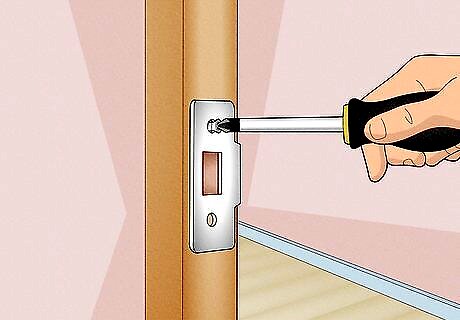
Screw in the new strike plate. Align the strike plate over the door frame and latch. Attach the strike plate to the door with any screw holes and screws provided. If the latch is too large to comfortably fit through the strike plate, you may need to purchase and secure a more fitting one.
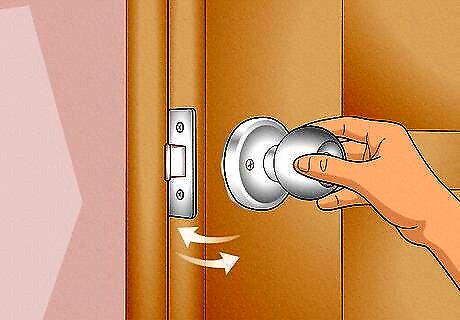
Test the door knob to make sure it works. Open and close the door several times to make sure the latch slides comfortably against the door jamb and closes. Turn the door handle as well to check for looseness—if it is loose, tighten the screws or use the wood putty to adjust the screw holes.
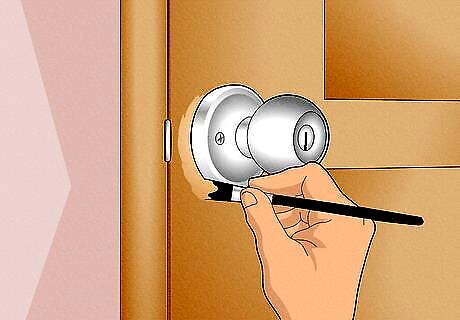
Refinish or repaint the area around the door knob, if needed. If your last door knob was larger than the new one, the areas your new door knob does not cover may look scuffed or unpainted. Touch up any scratched, chipped, or unpainted areas with paint or wood stain. If your door is old and in need of a new paint coat, you may want to paint or refinish the entire door.


















Comments
0 comment